

EXPLORE BY TOPIC:
  Our top 10 resources
Our top 10 resources
  Childhood / Early Life
Childhood / Early Life
  Chronic Stress
Chronic Stress
  Education
Education
  Food Security
Food Security
  Genetics
Genetics
  Jobs & Work
Jobs & Work
  Housing / Neighborhoods
Housing / Neighborhoods
  Income & Wealth
Income & Wealth
  Race / Racism
Race / Racism
  Social Inclusion
Social Inclusion
  Policy & Change
Policy & Change





Buy the DVD
e-Newsletter
FAQs
Contact Us
Site Map
Home

|
 |


|
Background: In the United States, street address and zip code are surprisingly good predictors of health. Why? Because the social, economic, and physical environments in which we live powerfully shape our life chances and wellbeing - for better and worse.
Where we live is not simply a matter of personal preference. It has a profound impact on financial security, school quality, job opportunities, safety, as well as access to goods and services. Unfortunately, racial segregation and past housing and loan discrimination have helped create inequities in neighborhood quality and the distribution of wealth and health.
Among other things, communities with lower income and educational levels tend to have higher rates of asthma, obesity, diabetes, heart disease, and child poverty. They are also more likely to have substandard housing, underfunded schools, poor access to grocery stores and supermarkets, and to be located near toxic industries and other sources of pollution.
On the other hand, well-off neighborhoods include many resources that help protect and sustain individual and group health: safe streets, well-maintained public spaces, good schools, libraries and other amenities, community programs, clean air, and good access to jobs and healthy food options.
Several overlapping factors play an important role in shaping health directly and indirectly:
Physical environment. Built space, infrastructure, and environmental quality all have a direct impact on our wellbeing. Old, substandard housing is more likely to have peeling paint, exposing families to dangerous lead levels, as well as pests and mold, which increase the risk of infectious disease and respiratory ailments like asthma. Geographic access to jobs, services and safe places to exercise and play shapes behaviors, choices and economic opportunities. Proximity to polluting industries, waste, freeways, and other hazards affects the air we breathe, the water we drink and the land we live on. Noise pollution also affects our anxiety and stress levels, which increase our risk for chronic illness.
Economic environment. Wealth, employment and economic mobility are important to foster good health, now and in the future. High housing costs threaten food and financial security, while concentrated poverty and a lack of good jobs lead to crime and disinvestment. On the flip side, home ownership brings financial security; attracts public and private investment in businesses, schools and infrastructure; and also promotes neighborhood cohesion - all of which are beneficial to health. Job training and access to good jobs with benefits, decent pay and career ladders help families avoid falling into financial disaster and reduces their risk for premature death and chronic disease.
Social environment. Communities that have strong social networks and foster social inclusion are healthier. Isolation and lack of support not only contribute to illness, they disempower individuals and communities. Neighborhoods where residents gather and help one another can foster belonging, affirmation and increased civic participation. They also have a bigger voice: organized groups can better advocate for their needs, reduce crime and increase safety, and bring health-promoting resources and services into their environment.
Resources and services. Our access to grocery stores and supermarkets, reliable transportation, clean parks, safe streets, community programs and institutional services reflect larger structural patterns of opportunity and advantage in society. Nevertheless, they impact our ability to make healthy choices, to gain skills and knowledge, to get adequate health care, fire protection and police protection, to avoid injury and live relatively unencumbered by fear, and fundamentally, to ensure that our basic needs are met and that we have a future to look forward to.
Together, these elements determine our health in subtle and obvious ways. Ensuring that every community is the healthiest it can be requires community organizing, political will, and public investment. Strategies to revitalize neglected areas, clean up environmental hazards, improve schools and foster economic development and wealth are critical they but must include and respond to the needs of residents, who more often than not are painfully aware of what is wanting in their communities.

|
|
|
| |
|
Housing / Neighborhoods: 0 items found |
 The Funders Network The Funders Network 
WEB SITE The Funders’ Network for Smart Growth and Livable Communities brings together foundations, nonprofit organizations and other partners to address the range of environmental, social, and economic problems caused by development strategies that fail to consider the big picture. Their Web site's resource section contains public documents published by the Funders' Network, as well as materials and information produced by other organizations, and links to selected community development organizations. |
 |
 The Perfect Neighborhood The Perfect Neighborhood 
ONLINE INTERACTIVITY based on UNNATURAL CAUSES What comes to mind when you think of a healthy neighborhood? What does it take to make a neighborhood more healthy? Find out why conditions in some communities might be less favorable to health than others and what can be done to change them. |
 |
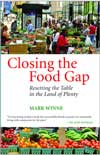 The Poor Get Diabetes, the Rich Get Local and Organic The Poor Get Diabetes, the Rich Get Local and Organic 
ARTICLE by Mark Winne In this excerpt from his new book, Closing the Food Gap: Resetting the Table in the Land of Plenty, Mark Winne explains a growing split in the diets of the haves and have-nots; at the same time that the wealthy are coming to prefer organic and locally-grown foods, the poor have been losing geographical and economic access to healthy options. He also reports on a survey by the non-profit group Hartford Food System, which found that low-income consumers in the area would prefer to purchase organics and fresh foods, but simply couldn't access or afford them. |
 |
 The Praxis Project The Praxis Project 
WEB SITE The Praxis Project is a national, nonprofit organization that builds partnerships with local groups to influence policymaking to address the underlying, systemic causes of community problems. Committed to closing the health gap facing communities of color, they forge alliances for building healthy communities. Praxis trains its partner organizations and provides research, technical assistance and financial support to tackle issues impacting the well being of communities. Their site contains an information resource center with additional resources and reports on equity and social justice. |
 |
 The Questionable Contribution of Medical Measures to the Decline of Mortality in the United States in the Twentieth Century The Questionable Contribution of Medical Measures to the Decline of Mortality in the United States in the Twentieth Century 
SCHOLARLY ARTICLE, The Milbank Memorial Fund Quarterly. Health and Society, 1977 This article makes the case that social reforms, not improvements in medical technology, have been largely responsible for the major improvements in population health over the past century. "Legislators, practitioners, and the public may deem it "heretical," but analysis of United States data shows that introduction of specific medical measures and expansion of services account for only a fraction of the decline in mortality since 1900. Even acknowledging that "mortality" and "health" are not synonymous, analysis of age- and sex-adjusted rates still suggests important trends and generates hypotheses for informed social action."
Available online by JSTOR subscription or purchase only. |
 |
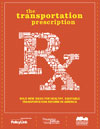 The Transportation Prescription: Bold New Ideas for Healthy, Equitable Transportation Reform in America (pdf) The Transportation Prescription: Bold New Ideas for Healthy, Equitable Transportation Reform in America (pdf) 
REPORT from PolicyLink, Prevention Institute, and the Convergence Partnership, 2009
This report synthesizes the insights and recommendations of a group of leading academic researchers and advocates working at the intersection of transportation policy, equity, and public health identify opportunities for creating transportation systems that promote health and equity.
|
 |
 THRIVE: The Tool for Health and Resilience in Vulnerable Environments THRIVE: The Tool for Health and Resilience in Vulnerable Environments 
WEB SITE THRIVE is a tool developed by the Prevention Institute to help you understand and prioritize the factors within your own community that can help improve health and safety. The tool can help answer questions such as: How can I identify key factors in my community and rate their importance? How are these factors related to health outcomes? What can I do to address each factor? Where can I go for more information? |
 |
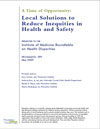 Time of Opportunity: Local Solutions to Prevent Inequities in Health and Safety (pdf) Time of Opportunity: Local Solutions to Prevent Inequities in Health and Safety (pdf) 
REPORT by Dr. Anthony Iton of the Alameda County Public Health Department and Larry Cohen, Rachel A. Davis and Sharon Rodriguez of Prevention Institute This 2009 report prepared for presentation to the Institute of Medicine Roundtable on Health Disparities presents 32 recommendations for strengthening communities, improving quality health care access, developing our health system, and supporting local efforts.
|
 |
 Too Young to Die: Part 1, Life's Toll Too Young to Die: Part 1, Life's Toll 
NEWS ARTICLE, San Francisco Chronicle, October 2004 In Bayview-Hunters Point, the stress created by environmental problems, racism, poverty and crime may explain why so many babies die young. Infant mortality is twice as high here as in the rest of San Francisco.
|
 |
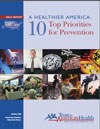 Top Ten Priorities for Prevention Top Ten Priorities for Prevention 
ISSUE REPORT, Trust for America's Health TFAH has identified 10 key policy areas where government action could improve the health of the U.S. population and lower the costs associated with treating people after they're already sick:
- Promoting Disease Prevention
- Combating the Obesity Epidemic
- Preventing Tobacco Use and Exposure
- Preventing and Controlling Infectious Diseases
- Preparing for Potential Health Emergencies and Bioterrorism Attacks
- Recognizing the Relationship Between Health and U.S. Economic Competitiveness
- Safeguarding the Nation's Food Supply
- Planning for Changing Health Care Needs of Seniors
- Improving the Health of Low-Income and Minority Communities
- Reducing Environmental Threats
And a crosscutting recommendation for:
- Holding Government Accountable for Protecting the Health of Americans
|
 |
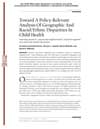 Toward A Policy-Relevant Analysis Of Geographic And Racial/Ethnic Disparities In Child Health Toward A Policy-Relevant Analysis Of Geographic And Racial/Ethnic Disparities In Child Health 
SCHOLARLY ARTICLE by Acevedo-Garcia, Osypuk, McArdle and Williams, 2008 Extreme racial/ethnic disparities exist in children’s access to "opportunity neighborhoods." We need to move beyond conventional public health and health care approaches to consider policies to improve access to opportunity-rich neighborhoods through enhanced housing mobility, and to increase the opportunities for healthy living in disadvantaged neighborhoods. |
 |
 Toxic Wastes and Race Revisited (pdf) Toxic Wastes and Race Revisited (pdf) 
REPORT by Benjamin A. Goldman and Laura J. Fitton, 1994 An update on the 1987 report on the racial and socioeconomic characteristics of communities with hazardous waste sites. Co-sponsored by Center for Policy Alternatives, NAACP, and United Church of Christ Commission for Racial Justice |
 |
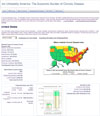 Unhealthy America: The Economic Burden of Chronic Disease Unhealthy America: The Economic Burden of Chronic Disease 
WEBSITE by The Milken Institute This interactive website provides a wealth of information on the rates and costs of chronic disease broken down by geography and disease. In its groundbreaking study, “An Unhealthy America: The Economic Impact of Chronic Disease,” the Milken Institute details the enormous financial impact of chronic disease on the U.S. economy – not only in treatment costs, but lost worker productivity – today and in the decades ahead. It also describes the huge savings if a serious effort were made to improve Americans’ health. |
 |
 Urban Settings (pdf) Urban Settings (pdf) 
REPORT from the WHO Commission on the Social Determinants of Health, 2007
Focuses on urbanizations, particularly broad policy interventions related to healthy urbanization, and closely examines slum upgrading.
This is an interim report, submitted by the Urban Settings Knowledge Network to develop the Commission's final report in May 2008.
|
 |
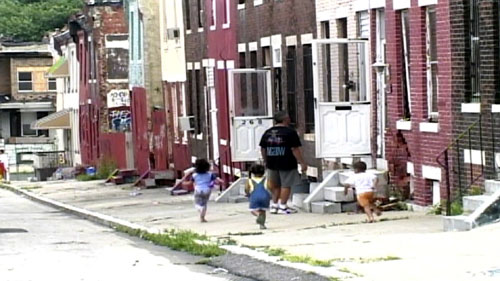 Wealth Equals Health Wealth Equals Health 
VIDEO EXCERPT, Unnatural Causes - Episode 3 Wealth and health are tightly linked in the United States. As immigrants remain in the country, as they "become American," their socioeconomic status becomes increasingly relevant to their health status. For those who experience discrimination, low wages, unstable employment, and other stressors, this relationship may erode the health advantage they enjoyed upon arrival in the country. |
 |
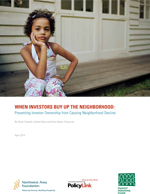 When Investors Buy Up The Neighborhood When Investors Buy Up The Neighborhood 
A report from PolicyLink "When Investors Buy Up the Neighborhood: Strategies to Prevent Investor Ownership from Causing Neighborhood Decline" describes three dozen strategies communities can use to reclaim foreclosed properties, encourage positive reinvestment, and stabilize their neighborhoods. The study also details how many of these approaches are already at work in Minnesota and across the country. |
 |
 Where Race Lives Where Race Lives 
Where you live in the U.S. isn't just a matter of preference. It's also about providing for the future. Does everyone have the same access to home ownership, good schools, and resources?
Explore how government policies and past discrimination have made generating wealth easier for some Americans than for others.
|
 |
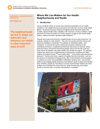 Where We Live Matters for Our Health: Neighborhoods and Health Where We Live Matters for Our Health: Neighborhoods and Health 
REPORT by the RWJF Commission to Build a Healthier America, Oct 2008 This issue brief examines the current state of knowledge about neighborhoods and their links with health, exploring the following questions:
• How could neighborhoods affect health?
• Are features of places really that important for health—or should we focus primarily on the individuals who live in them?
• Do all Americans have the opportunity to live in a healthy neighborhood?
• Could public and private policies improve neighborhoods in ways likely to improve America’s health?
The brief also includes several examples of public, private and joint public-private initiatives intended to make neighborhoods healthier places to live, learn and play. |
 |
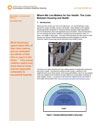 Where We Live Matters for Our Health: The Links Between Housing and Health Where We Live Matters for Our Health: The Links Between Housing and Health 
REPORT by the RWJF Commission to Build a Healthier America, Oct 2008
This issue brief focuses on three important and inter-related aspects of residential housing and their links to health: the physical conditions within homes; conditions in the neighborhoods surrounding homes; and housing affordability, which not only shapes home and neighborhood conditions but also affects the overall ability of families to make healthy choices. |
 |
 Why Place & Race Matter: Impacting health through a Focus on Race and Place Why Place & Race Matter: Impacting health through a Focus on Race and Place 
PolicyLink This report builds on PolicyLink's earlier work to look more intentionally and explicitly at race and ethnicity and what they mean in the context of building healthy communities. "Why Place and Race Matter" dives deeply into these issues and profiles dynamic groups and initiatives throughout California and beyond. Although approaches vary, each illuminates the interplay among people, place, and race. We hope these strategies and profiles will facilitate the exchange of ideas, encourage partnerships across disciplines and sectors, and stimulate action to build healthy communities. |
 |
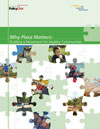 Why Place Matters: Building a Movement for Healthy Communities (pdf) Why Place Matters: Building a Movement for Healthy Communities (pdf) 
REPORT by J. Bell and V. Rubin, PolicyLink.org This report explains the framework of place (economic, social, physical, and service environments) to understand the relationship between community conditions and health, analyzes the connections among all the environmental factors that contribute to a healthy community, and identifies environmental effects on community health. |
 |
 Youth Empowerment Strategies (YES!) Anti-Violence Program in Richmond, California Youth Empowerment Strategies (YES!) Anti-Violence Program in Richmond, California 
WEB-EXCLUSIVE VIDEO, Unnatural Causes Learn more about YES! - the after-school youth anti-violence program featured in "Place Matters."
|
 |
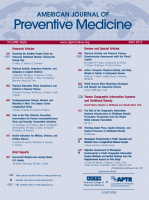 Zip Code as Important as Genetic Code in Childhood Obesity Zip Code as Important as Genetic Code in Childhood Obesity 
ARTICLE in Science Daily, 2012 Report on a new study that indicate that where a child lives, including factors such as the neighborhood's walkability, proximity to higher quality parks, and access to healthy food, has an important effect on obesity rates. |
 |
| « Prev 1 | 2 | 3 | 4 | 5 |
|




